Drive Into the Future of Fleet Management - PODCAST TRANSCRIPT
September 23, 2025 at 4:00 p.m.Editor's note: The following is the transcript of a live interview with a powerhouse panel sponsored by QXO. You can read the interview below, listen to the podcast or watch the recording.
Intro: Welcome, everybody. Karen Edwards here. I am filling in for Heidi and Megan, because they are celebrating a special event in Megan's life this week. She's getting married. So, I am going to be your host today and we're going to be talking about,
Karen Edwards: Fleet management. You know, it's something that just about every contractor has, but we've never really talked about it and there's some important things to know and considerations for you and your fleet.
Karen Edwards: So joining me today are Seth Peach, Damien Katzenmeyer and Rich Carroll. This,
Karen Edwards: conversation is sponsored by our friends at QXO. Thank you very much. And it's a really appropriate conversation for today, because it is Driver Appreciation Week.
Karen Edwards: So thank you to all those drivers out there who, get our supplies and materials where they need to be and get stuff to our job sites. We appreciate you. So, let's get started. Seth.
Karen Edwards: How about you introduce yourself?
Seth Pietsch: Seth Peach with, I'm the president of Integrity Insurance and Bonding, located in the Happy Valley oregon area. So, yeah, gone way, way back in the roofing industry,
Seth Pietsch: But on the insurance side, started my insurance career in about 2007 and been working predominantly with the roofing industry since 2009. So, happy to be here.
Karen Edwards: Yeah, yeah, we're glad to have you, because insurance is a big part of the conversation when talking about fleet and fleet management. All right, Damien, introduce yourself, please.
Damien Katzenmeyer: Yes, good morning and go Beavers! Hey, Seth, I didn't realize that.
Damien Katzenmeyer: My wife is a grad of Oregon State, so…
Seth Pietsch: I played baseball there, so, yeah. Very nice. So I'm actually part of the Beaver family and not the Ducks. Alright.
Damien Katzenmeyer: Yes, right.
Damien Katzenmeyer: So, Damien Katzemar, VP of Fleet and Logistics here at QXO.
Damien Katzenmeyer: been in and around the industry for a little over… right at 14 years now. Was a district manager with RSG, Roofing Supply Group and Beacon, for about 10 years and then, like I said, the last 4 years have been here with QXO and the VP of Fleet and Logistics. Look forward to the conversation today.
Karen Edwards: Yeah, alright and… last but not least, Rich!
Rich Carroll: Good morning, everybody. I've been involved in the roofing industry since 1984. Worked a little bit in private equity and investment banking.
Rich Carroll: I've had numerous companies with multiple fleets and I am also looking forward to our discussion today. Right now, I'm the co-founder of Carroll Consulting and we help small to medium-sized businesses grow. The one thing I do want to mention about Driver
Rich Carroll: Appreciation Week. One of the easiest things to do to appreciate your drivers is, if they're assigned to a truck that's their truck, put their name on the door. They really get pumped up about that and it's very easy to do with a decal, so…
Rich Carroll: Go ahead and do that and you'll get some good feedback from your team.
Karen Edwards: Great idea, Rich. I love that. Yeah, personalize it a little bit, make it special.
Rich Carroll: Yes.
Karen Edwards: All right, so I, while we dive into this conversation, I am going to stop the screen share and, we're going to ask the first question. What…
Karen Edwards: How many vehicles do you have to have to be considered a fleet?
Karen Edwards: Seth, get us started.
Seth Pietsch: Well, from the insurance company's perspective, a fleet of vehicles is 5 or more and that's not including trailers, that's actually a vehicle F-150, you know, something like that.
Seth Pietsch: So, you get fleet rated from an insurance company once you have 5 or more.
Seth Pietsch: So and that goes up to… to… once you have 5 or more, that's when you're fleet rated, so it goes up to as many as… after that and it's still… still considered fleet. You don't get a special discount after that.
Karen Edwards: Anything to add? Damien, you guys have definitely a huge lead team.
Damien Katzenmeyer: Absolutely, yeah. We have over 2,500 CDL trucks, another 400 or 500 pickups and then all sorts of trailers and material handling equipment, so…
Damien Katzenmeyer: I guess, Seth, you know, one question as I think back on roofers is.
Damien Katzenmeyer: What counts, right? Is it… do I have to own the asset or what if I have a 1099 sales rep or someone who's out driving a vehicle?
Damien Katzenmeyer: With my company name on them and maybe I reimburse them with those.
Damien Katzenmeyer: Would those count into 5 or how does that work?
Seth Pietsch: What it… what counts is, how many vehicles you have insured in your insurance policy. So, if you have 5, you know, 5 scheduled vehicles in your… in your auto policy, you're considered fleet rated by the insurance companies. So,
Seth Pietsch: Really, it just depends on how, you know, the…
Seth Pietsch: how you're structured with your employees or your subcontractors or your W-2s or 1099s, really what has to be, you know, the common denominator is there has to be an insurable interest in that vehicle for your insurance company to apply coverage. So.
Seth Pietsch: you know, I know a lot of owners will buy a vehicle in their personal name and try to insure it in their company name. Well, that's…
Seth Pietsch: you know, there's never really too much thought in that, because you're like, well, I'm the owner, I'm the president of the company, of course I should have my, you know, company insure it.
Seth Pietsch: But that's not… there's not an insurable interest unless that owner or president of the company actually has a lease agreement between himself and his company. So, it's very important to make sure that all of those
Seth Pietsch: You know, gaps, if you will, are… are dealt with and…
Seth Pietsch: and figure it out. Otherwise, if there's an accident or a claim, you know, the insurance company could try to deny coverage. And unfortunately, insurance companies are notorious for trying to find ways to, you know, deny a claim or reduce the coverages. So it's very important to talk with your legal representation to make sure that any sort of
Seth Pietsch: You know, gapping like that is…
Seth Pietsch: It's covered and figured out, so there's no… there's no issues from a coverage perspective.
Rich Carroll: Now, one thing I would like to add is if you have less than 5 vehicles and you have a structure maintenance program and you're doing tracking, some of your vehicles might still have compliance, so…
Rich Carroll: Keep in mind that there's still other regulations that you might need to follow, even if you're less than 5 vehicles.
Karen Edwards: Yeah. We talked a little bit, too, about formal lease agreements. If, you know, you have a 1099 employee who's driving the vehicle.
Karen Edwards: Do you remember what that was covering in our conversation the other day?
Seth Pietsch: Yeah, I mean, just the lease agreements is just making sure that, you know, if there is somebody that owns a vehicle, but they're trying to insure it underneath the company vehicle, because they're working for that company, you know, whether they're a sales rep or, you know, a delivery driver or whatever.
Seth Pietsch: we just want to make sure that there's a lease agreement between the owner of that vehicle and the actual entity that's insuring it, the company that's insuring it. That's what we were, you know, talking about, just because if there's not an insurable interest with the insurance company to insure that vehicle.
Seth Pietsch: they won't… they will… they will try to find ways not to cover a claim if something happens. So, that's what… that's what the lease agreement part was… conversation part was about.
Karen Edwards: Okay and the… we've learned that the third biggest expense after labor and materials is…
Karen Edwards: Bleats. Bleat management. So, Damian, can you talk a little bit about, you know, the total cost of ownership? Like, these are things that you have to consider,
Karen Edwards: When you have that fleet and you're managing it.
Damien Katzenmeyer: Yeah, sure. So on the total cost of ownership, I think there's the obvious things. You have to buy the vehicle. And so, how are you going to do that? Are you going to use capital and pay for it? Are you going to,
Damien Katzenmeyer: get a loan? Are you going to lease the vehicle? And there's all sorts of elements, pros and cons, depending on your business model, for how you'd want to go about doing that. So there's that.
Damien Katzenmeyer: Then the next big bucket is obviously the run and maintain. So, I've got to do the maintenance on the vehicle and I've got to keep up with that.
Damien Katzenmeyer: when you keep up with your maintenance, you'll bring your total cost of ownership down. When you think, I'm gonna skip the preventative maintenance this time and save the $200,
Damien Katzenmeyer: rough month or I'm a little behind the cat, whatever the reasons may be, ultimately you end up costing yourself more in the long run. With downtime of the vehicle actually being down when it goes down, that's much more likely to and then the cost of those repairs go up, right? So…
Damien Katzenmeyer: You gotta have a scheduled maintenance program, you gotta understand that. You gotta understand how long is the vehicle gonna last me? You know, what am I using it for and what's the use case? How hard am I gonna be on the vehicle?
Damien Katzenmeyer: How much load am I putting on the vehicle? So, you know, it may be a 5-year lifespan, but the way I use it's gonna make it a 3-year lifespan and then plan accordingly to that.
Damien Katzenmeyer: And then you want to tie all of that… and then, sorry, there's one more. Fuel. Depending on where you are, the cost of fuel, varies significantly across the country, but, they… they run on fuel and they require the fuel, so what are we doing with it? Are we being efficient with the use of it? So all of those things kind of go together and give you the total cost.
Damien Katzenmeyer: The other piece you want to make sure to do is balance
Damien Katzenmeyer: Depending on how big your fleet is, balance when you buy and how you rotate the vehicles through. So, if you have a big outlay and you buy 10 vehicles in one year.
Damien Katzenmeyer: well, in 5 years, when they're all due to be replaced, you're gonna have a big outlay again, so think about that. You want to spread it over time if you can or whatever works with your business, but…
Damien Katzenmeyer: That cost, if ignored.
Damien Katzenmeyer: We'll reach around and bite you in the rear end if you're not paying attention to it.
Karen Edwards: Yeah, yeah, it's funny, as you were… as you were explaining all of that, in my mind, I'm thinking, well, this is what we tell building owners about their roofs, right? You gotta do the maintenance twice a year. You gotta, you know, what's your total cost of ownership? And I'm like, wow, if only we were thinking about our own fleets, as we were telling our customers that they should with their roofs. You know, do… and most… most contractors probably don't have a fleet manager.
Karen Edwards: That, that, you know, what are some tips and, best practices, maybe, for
Karen Edwards: taking care of their vehicles. How do you track that? How do you track that maintenance? How do you, you know, is there software? I'm sure there's fleet management software for… like, QXO has got to be, you know, with all the trucks that you have. Sure. But what if you have 7 or 8 trucks? You know, how are you managing that?
Damien Katzenmeyer: Yeah, absolutely and Rich, I'll kick to you after this. Maybe you've got some examples as well, but yes, if you do a simple Google search, you will find all sorts of fleet software tools that are out there.
Damien Katzenmeyer: And they vary in capabilities from
Damien Katzenmeyer: just tracking your expenses, so you understand where your money's going, to predictive AI that tells you, based on the miles and the work you've done to the truck and how you're using it, hey, this truck, it's gonna break down in 3 months, right? So get ready.
Damien Katzenmeyer: take care of it now before it's a catastrophic-type failure. And then we'll talk, I'm sure, later, about some telematics. There's even a whole other set of data points that you can grab and put into your software to help you track and understand
Damien Katzenmeyer: the maintenance cycle of your vehicle and what's going on with it. So, the biggest thing is just pay attention and not ignore it, because it is a significant part of your business.
Damien Katzenmeyer: The… if… if that's what you're gonna use it for. And the other thing to remember is, your name's on the side of the truck, most likely.
Karen Edwards: Right? So it's a rolling billboard.
Damien Katzenmeyer: Of… of your company and your representation. So, nobody wants their truck broken down on the side of the road with their name sitting there on the…
Damien Katzenmeyer: On the side, showing everybody that, hey, our vehicle broke, right? So…
Karen Edwards: Yeah, Rich?
Rich Carroll: Well, yeah and on top of that, safety and liability. If you're not maintaining your vehicles, there's always the safety and liability if there's an accident, because of failure. But there is a lot of softwares out there. There's also,
Rich Carroll: some service softwares that you can adapt to if you have a small fleet, you know, a few vehicles, that'll give you reminders to potentially go check the odometer to see where things are at. I've known people that also do spreadsheets.
Rich Carroll: But there's a lot of new innovation out there. A lot of it's being created by the rental car companies.
Rich Carroll: Because they want to be able to maintain exactly… making sure their fleet doesn't break down. And so I do have a customer that's actually working on his own.
Rich Carroll: with AI to try to create, something with cameras, so when their vehicles are coming in, they can actually monitor, if there's any new damage.
Rich Carroll: what's the wear on the tires and also give reminders through email to check, you know, when's the preventative maintenance time coming up. A lot of the newer vehicles already talk to us by phone. For some of us that have some of the newer… they remind us when it's time to have an oil change.
Rich Carroll: So a lot of that stuff is… is… is…
Rich Carroll: merging in with a fleet maintenance program. So there's dozens of those programs out there. I would encourage you to do your research on what fits you the best.
Rich Carroll: And what pitch to the other systems that you already have to try to do some, you know, software stacking, where it might be talking to the other soft…
Karen Edwards: Yeah, yeah and the one you mentioned,
Karen Edwards: I just want to elaborate on that, because you told us the other day, it's, they have cameras in their… in their facility or in their yard and as a truck enters and leaves, it looks at it and it can say, well, it left this morning without that dent and when it came back this evening, it's got a dent there now. So, you know, we need to figure out what happened or address that. So, yeah, there's so much technology out there nowadays with their vehicles.
Karen Edwards: and, the tools. And so, Seth, I'd like you to talk a little bit about, how insurance companies look at technology. You know, if a contractor's
Karen Edwards: got technology in their vehicles that are monitoring driving speed, monitoring sudden stops, you know, filming out the front and back window. What is that… how does that matter to that insurance?
Seth Pietsch: Well, it matters significantly. Over, you know, almost the last 20 years, the number of insurance companies that, you know, still want to write or are aggressively writing, you know, roofing contractors has diminished.
Seth Pietsch: So, the roofing industry is a tough… is a tough trade to write the insurance for from just all lines, but the auto tends to be one that's, difficult to write. And there's… the insurance companies are starting to gear towards that if you don't have the proper protocol in place that's, you know.
Seth Pietsch: telematics, that's GPS, that's forward and rear-facing, you know, cameras that you may no longer be eligible to even have insurance through that carrier or them even offer, you know, to offer terms or coverage for you. So the insurance companies are gearing towards, you know.
Seth Pietsch: having these requirements in place, you know, already before they'll even offer coverage. And that's… that's adding a burden because, you know, for some companies, that's an extra expense, we understand that.
Seth Pietsch: And there's not… the insurance companies aren't giving discounts from a premium perspective because you have all these things. They're just allowing or to continue to offer coverage. But they do… insurance companies do, partner with third-party vendors, so they may not give a discount on their insurance premiums, but if they use a certain techno… you know,
Seth Pietsch: telematics company or something like that, that telematics company may give you, you know, 20% or 25% discount because you're insured with an insurance company that they partner with. So, you can also get discounts on that, you know, the technology piece, the…
Seth Pietsch: You know, the safety piece, from…
Seth Pietsch: From the vendor you're using, because you have insurance through a different, certain company.
Karen Edwards: Okay and we had a question come in relating to maintenance, so I want to make sure that we just take a step back and answer that. The question is, how would you navigate the conversation if maintenance costs keep rising because you're trying to keep the vehicle till the end of the life?
Karen Edwards: And then when you trade it in, you kind of get next to nothing for it. This person implemented a maintenance program a year ago and they're seeing some trends, but they want to be proactive versus reactive. That's a tough question, right? At what point do you make that call? I don't know, Rich, you want to…
Karen Edwards: Start us out there.
Rich Carroll: Well, we… one of the things that we focused on was the… the… what's the image of our vehicles?
Rich Carroll: And we wanted to make sure our vehicles always looked like they were in tip-top shape. So we kind of put a mileage limit on, say, service vehicles, maybe a mileage limit on, you know, ops vehicles. Obviously, cranes and other things were kind of out of that purview, but…
Rich Carroll: You, you know, you want it…
Rich Carroll: It is such a tough question to answer, depending on where you're at, but we try to put a program together where if we knew that we were driving 20,000 miles a year with our service vehicles, after 4 years, we needed to start replacing them.
Rich Carroll: So, like Damien said, if we staggered the purchases, we could build that into our budget. So that's what we try to do with a lot of our contractors, is when we're working on their budgets in the fall.
Rich Carroll: You know, what expenses are you going to have over the next 5 years for your vehicles?
Rich Carroll: We also try to set a plateau on
Rich Carroll: Where… at what point are we spending too much on maintenance?
Rich Carroll: Now, once again, that depends on the contractor, so I don't have a specific number for you, but at a certain point, the vehicle, your outlay is way more than if you've replaced it.
Rich Carroll: So once again, it's, it's, it's really up to the individual, but having the conversation,
Rich Carroll: you know, with your people and trying to put a strategic plan together on your vehicles, is at least you have a plan in place. It doesn't always follow the map you made, but it does give you some good metrics to look at when to make changes.
Karen Edwards: Yeah.
Karen Edwards: Okay, I want to circle back to, technology and I want to talk about safety. And Damien, I'm going to look to you, because you had some… you're using technology in your vehicles, but you had some really, I thought, pretty shocking statistics, especially when it comes to seatbelts.
Damien Katzenmeyer: Oh, seat belts? Yeah, for sure.
Damien Katzenmeyer: Yeah, so we… we started… we've had telematics in our truck, so I'll just start… so we use one of the big telematics companies. We have telematics in our… in our trucks. We made a change
Damien Katzenmeyer: About two and a half years ago to, you know, an upgraded version.
Damien Katzenmeyer: And with that, great reliability, 95-98% of the time. All of them are working across 2,500 assets, 3,000 really counting pickup trucks.
Damien Katzenmeyer: So great systems, great, great reliability and then they start giving you information. Speeding, heavy speeding, moderate speed, all the types of speeding.
Damien Katzenmeyer: harsh braking, you can even get down to fuel efficiency and how a driver is driving, if they're aggressive on the truck, therefore, you know, leading to less fuel mileage, those kinds of things. All sorts of things you can pick up, from the telematics side.
Damien Katzenmeyer: even more impressive, about a year and a half ago, we started with the dual-facing dash cams. And so, you'll hear all sorts of conversations. Like Seth said, it's the way the world is going and most of the world is already there.
Damien Katzenmeyer: So there's a fear, hey, I'm gonna lose drivers if I put cameras, because they're spying on me.
Damien Katzenmeyer: If it's a normal way of business, the sooner you start, I think, Rich, we were talking about a couple days ago, the better, because your workforce sees it and grows with it. But the dual-facing cameras really showed us a lot and you're right, there was a couple of things.
Damien Katzenmeyer: Our cameras, have AI in them.
Damien Katzenmeyer: And they give the driver nudges, they call them when they do something that they shouldn't be doing. Distracted driving, you know, not looking at the road.
Damien Katzenmeyer: For… for 4 seconds or more, if you can imagine how far you go traveling 60 miles an hour in 4 seconds.
Damien Katzenmeyer: A lot of things happen in that time, right? So, it'll nudge them, bring awareness to them to stop or to start doing what they should be doing. It'll also nudge them on… or it'll tell them if they run through a stop sign. So, you know, the California roll, as some of us like to call it, where we slow down, we look, but we still roll through the stop sign.
Damien Katzenmeyer: And several other things, but the one that was amazing to us is
Damien Katzenmeyer: Seatbelts. And if you would have asked me, I would have said the seatbelt thing was kicked in the 80s or 90s. Everybody wears their seatbelts.
Damien Katzenmeyer: Not true. And we found that once we put the cameras in, that 25 to 30% of our drivers were not wearing their seatbelt.
Damien Katzenmeyer: And so, the camera nudges them, the camera nudges them again and then it tells their supervisor and our supervisor can address it with them.
Damien Katzenmeyer: So the good news is, once we put the cameras in, that the first 2 or 3 weeks, we see a lot of those nudges and a lot of the warnings, but they go away very, very quickly, right? And so the drivers start wearing their seatbelts and doing the things they're supposed to do.
Damien Katzenmeyer: The distracted driving starts to decrease. All the right behaviors that you want to incent and you want to make sure are happening.
Damien Katzenmeyer: are starting to happen and
Damien Katzenmeyer: The drivers that are gonna mysteriously, you know, the fear is, my driver's gonna leave if we put these in.
Damien Katzenmeyer: Those are probably the drivers you don't want to keep.
Karen Edwards: Right? When you think about it, if they're worried about.
Damien Katzenmeyer: wearing their seatbelt, they're worried about distracted driving and messing with cell phones and things like that. Probably not the driver you want with the name… your name on the side of their door doing things that, could lead to serious injuries, so…
Damien Katzenmeyer: But yeah, so that's kind of been our journey so far and
Damien Katzenmeyer: It's, it's trending in the right direction, knock on wood, so…
Karen Edwards: Yeah, so we talked about, I think, about the cameras and the monitoring and the technology kind of being a double-edged sword, because…
Karen Edwards: You… if you're seeing unsafe practices or behaviors, you have to have, as an employer, right, you have to have
Karen Edwards: Process in place to address that.
Damien Katzenmeyer: Yeah, absolutely and I know several of them have this built into the software.
Damien Katzenmeyer: is it will… it will store all the events for you and it gives you the opportunity to sit down with the driver and actually coach and show them. It's not a disciplinary tool, unless it needs to be, but it's a coaching of, hey, are you aware that you're doing these things? Let me show you.
Damien Katzenmeyer: And most drivers are very responsive to it, to go, had no idea. Like, didn't even recognize it. It's a habit I've been driving for 20 years, it's never been a problem.
Damien Katzenmeyer: And they're right, it's not a problem until it's a problem, right? And so, the feedback is actually
Damien Katzenmeyer: on the vast majority of them, really good. No idea that I was doing that. We coach and then the behaviors improve.
Damien Katzenmeyer: You're right. If you don't coach.
Damien Katzenmeyer: the deposition, I can only imagine, looks very, very ugly when… so you're telling me, Mr. Supervisor, Ms. Supervisor, that
Damien Katzenmeyer: You had the telematics, you see all these behaviors and you chose not to address them?
Damien Katzenmeyer: And that could be very, very bad for you, right? So…
Damien Katzenmeyer: vice versa, you don't have the cameras and I'm sure… I'm sure Seth can talk to this quite a bit, is you don't have the cameras, the deposition looks something like, you knew your drivers were bad, that's why you didn't put cameras in, right? And so…
Damien Katzenmeyer: It's a bad position to be in either way. You want to have the cameras and do the right thing and talk with your drivers.
Damien Katzenmeyer: Seth, I don't know if you had anything to add to that, for sure.
Seth Pietsch: No, you're 100% right. It's,
Seth Pietsch: larger companies, for one, that… companies that do have a larger fleet, they are… they are held to a higher standard. Whether they know that or not, if, you know, if…
Seth Pietsch: an attorney gets involved because there's a pretty bad claim that happens. You know, they're… they are gonna go…
Seth Pietsch: For the throat, if this protocol is not in place and you're not doing your…
Seth Pietsch: you know, just your proactiveness to help. So, it looks really, really negative if it's not in there. We're all here this morning, we understand there's a cost, we want to, you know, spread the word about what can be done to implement this stuff, but I mean, at this point in time, if you don't have anything in your
Seth Pietsch: you know, like this that we're discussing in your… in your fleets, I mean, it's… it's time to probably get it, because it's,
Seth Pietsch: the inflation of the claim is going to be, you know, immensely increased if you don't have it, compared to if you do. And it doesn't mean that your claim would go down, because you did have it, but at least you, you know, drop the odds of having a severe claim and put your odds in your favor a little bit more.
Karen Edwards: Yeah, for sure. I'd like to talk a little bit and maybe, Rich, you can get us going, about the folks
Karen Edwards: that are driving your vehicles? Because it's one thing to be just driving a pickup truck, right? But when you add a trailer, when you add, you know, what are some of those things that contractors should be thinking about before they let somebody get behind the wheel?
Rich Carroll: Well, I mean, if you're putting a trailer behind a, you know, half-ton pickup truck and you're carrying a bunch of roofing materials, you're probably going to be over 10,000 pounds.
Rich Carroll: If you… if you have a crew cab and put 6 guys in there, you're probably gonna be over 10,000 pounds.
Rich Carroll: And that brings… that brings a whole, slew of regulations in for DOT. Obviously, if you have a crane or something bigger that's over 26,000 pounds, then now you're talking about CDL, type driving and… and following,
Rich Carroll: you know, the protocol there. In order to…
Rich Carroll: you have to screen your employees. There's DOT physicals, that be able to drive vehicles over 10,000 pounds. So you need to keep track of that to make sure all your people are being physical when they need to be physical.
Rich Carroll: There's all… there's all kinds of requirements when you start adding trailers on.
Rich Carroll: To just regular vehicles and I think it's very important
Rich Carroll: That your drivers are aware of that, because a lot of times, they don't… they might have a truck at home and they're pulling a trailer every weekend or an RV or something and they think they're fine. But what they don't understand is once they're in a business truck, that a bunch of different regulations come in.
Rich Carroll: One of the things we did with one of my businesses is that we brought the, state DOT in to speak during our safety meeting.
Rich Carroll: And what do we look for on the road? You know, do you have a DOT number on your truck if you're pulling a trail?
Rich Carroll: So they gave us a lot of advice on how to be more proactive with our vehicles. And when it comes from, you know, a level, a security level, like a DOT officer, it has more impact than if it's coming from the office. This is what we need to do. The other thing I want to go back to is.
Rich Carroll: If you only have a couple vehicles, that's the perfect time.
Rich Carroll: To start going to the telemetrics and the cameras.
Rich Carroll: Because it's not much of a change.
Rich Carroll: Once you have 30 vehicles and you try to do it, Like I did.
Rich Carroll: We had a lot of pushback, you know, we don't want Big Brother watching us. You don't trust us. And we all know that's not the purpose of it. The purpose was about safety, the purpose was learning more about how we can maintain our vehicles. So once again, do it early, but make sure you do have somebody that's responsible
Rich Carroll: For all your vehicles and knowing all the regulations. And if you're going state to state.
Rich Carroll: You know, if you're going from Washington to Oregon.
Rich Carroll: Minnesota to Iowa, what are the responsibilities when you go across state lines? Because they are different. Each state does have different regulations. Make sure you're complying with those rules as well.
Karen Edwards: Yeah, so from an insurance perspective, Seth, what should people be considering if they are going across state lines? Does that change the kind of coverage that they need?
Seth Pietsch: Coverage-wise, not so much. It's… it just really depends on the GVWs of the vehicle or the gross combined weight.
Seth Pietsch: On whether or not there's certain, you know, federal filings or anything like that through DOT or, you know, whether they're hauling hazmat or anything like that. So it's really just…
Seth Pietsch: understanding on whether or not, if I'm crossing state lines, do I need a certain, you know, filing to be able to do so? Do I do any sort of haul-for-hire? Because that, you know.
Seth Pietsch: That adds a whole different, you know, dynamic to the insurance equation on things and your filings, you know, so,
Seth Pietsch: it's relatively easy to not, you know, to have insurance coverage, even though you're crossing state lines, like, we're 20 minutes from the Washington border, so, we don't have to usually do anything special, but it's just making sure that, you know, if there's certain filings, you have that, because we have a lot of police officers on both sides that are waiting for a contractor, you know, towing a heavy-loaded trailer.
Seth Pietsch: you know, to pull them over and I see it all the time,
Seth Pietsch: You know, because they want to check to see if they have the right filings or whatever. It happens, I mean, daily, you know, right on the borders.
Karen Edwards: Yeah.
Karen Edwards: Yeah, I'm… I was wondering, too, about, you know, a lot of,
Karen Edwards: along the highways, there's a lot of weigh stations, there's a lot of inspection points for commercial vehicles. At what point would… would a roofing company be affected by that or is that really more for the semis that are driving up and down the highways? Do you guys know?
Damien Katzenmeyer: That's a great question. I'm not 100% sure. I would think if you're rolling with a DOT number,
Damien Katzenmeyer: you would probably need to stop if they tell you to stop. There's also best pass technologies and different types of things.
Damien Katzenmeyer: That allow you to… to go around some of those stations legally. But yeah, if you… if you're supposed to pull into one and you don't pull into one, you'll definitely get stopped. You'll definitely get a citation for that, so… which will go against your… yeah, which will go against your FMCSA scores, right? So… or your CSA scores.
Karen Edwards: And can you just explain what those scores are that you mentioned right there? I don't know what those are.
Damien Katzenmeyer: Yeah, yeah, so FMCS is the Federal Motor Carrier Standards Act or regulations, FMCR. Those are all the rules around DOT, right? And then, so what DOT, what they do is they take every stop and every…
Damien Katzenmeyer: crash and they… they put them into a database. There's a… there's a huge record. So you can go pull up any EOT number, on the Safer website, is what it's called and you'll see how that company… how many trucks they have, how many miles they drive.
Damien Katzenmeyer: How many times they've been stopped and then how many times they've been cited in those stops.
Damien Katzenmeyer: And so there's a couple of basic categories.
Damien Katzenmeyer: Like… Speeding, there's maintenance, there's crashes, there's hazmat, so there's the basics that show up there.
Damien Katzenmeyer: They rate you on those and then they compare you to all the, like, DOT number holders, right?
Damien Katzenmeyer: And they give you a total score. And then that score will be a… it's an ISS score and that… that kind of tells the officer that says, hey, this company, they'll run it through their computer when they drive by you on the highway. Hey, this company is in good standing, they've got good records and they're a safe fleet.
Damien Katzenmeyer: you don't have to bother them. Then there's kind of an optional of, hey, if you got nothing better to do, go ahead and pull this truck over with this number. Or there's a mandatory, if they run it and they see your number and you're on the list of mandatory companies, then they have to pull you over and do an inspection. So… so you're being graded constantly if you have a DOT number.
Damien Katzenmeyer: And it's your responsibility to fill out the MCS150 as a form.
Damien Katzenmeyer: Once every two years to update that, so…
Damien Katzenmeyer: They track all the others and then you have to report your fleet size and your mileage and all the things that are going on.
Karen Edwards: Wow.
Damien Katzenmeyer: Again, another thing to think about if you're running trucks that are,
Damien Katzenmeyer: you know, register with DOT number.
Karen Edwards: So, what makes a vehicle required to be registered and get a DOT number? Is it weight?
Damien Katzenmeyer: Yes, it's the gross vehicle weight or length in some cases, but if you're going to hit the length, you're probably gonna hit the weight. So it's the gross combined weight of the truck and trailer.
Karen Edwards: Wow, okay and this sounds to me like something insurance companies would be very interested in reviewing, so…
Seth Pietsch: Unfortunately, they are. It's public information. When you're going through a, you know, a DOT inspection or anything like that, that is linked to your USDOT number. It's very easy to fail an inspection, so you get that information put on your, you know, basically your profile with USDOT. Insurance companies pull that if they know, which we have to disclose if you have a
Seth Pietsch: USDOT number or not. They'll instantly go to that website.
Seth Pietsch: Look at the inspections, see if you've failed any or, you know, what your percentages are and it's as simple as failing as having a low tire or a tail light out or something like that.
Seth Pietsch: So, you may fail an inspection for something very minor, not even a major deal, but they'll still fail you and then when the insurance companies… and you don't have inspections that often, so you may have only had, let's say.
Seth Pietsch: you know, one or two in the last five years. I mean, you just never know how many are going to be showed up on there. So, if you're running at a 50% failure rate because you had a tail light out, you know, now all of a sudden you look like a bad risk to an insurance company and that's where we have to go in and write a compelling story to make you look really, really good. So, this whole conversation about having a fleet, you know, management program, that's going to help you pass
Seth Pietsch: DOT inspections as well, because it's going to be able to catch these minor things that might flag a failure on an inspection.
Karen Edwards: Yeah, yeah. I think it's about safety, too, right? Nobody wants to put anybody in… in harm. You know, your drivers are driving. We want these vehicles to be in the best condition, in the best shape, because everybody needs to go home at the end of the day.
Damien Katzenmeyer: Yeah, absolutely. And that's the other categories, as I'm thinking through it now, is driver fitness and hours of service. So, did my driver, as Rich said earlier, do they pass their DOT physical? Do I have my random drug screens in place?
Damien Katzenmeyer: And then what's their hours? How many hours have they been working total for the week? How many hours have they been working and driving today, right? And there's rules and regulations around that, so…
Damien Katzenmeyer: If you've got someone, you know, who goes to the job site before light at 6 AM and it's a long day and they're pulled over at 8pm.
Damien Katzenmeyer: Well, now there's a whole other set of problems if they're in a DOT-registered vehicle, so…
Damien Katzenmeyer: There's a lot to think about. There really is.
Karen Edwards: Well, I know, wow.
Karen Edwards: so many rules and regulations, so if you're a smaller contractor, it's not always about the…
Karen Edwards: It sounds to me like, you know, the DOT has those regulations for reasons, you know and a lot of it is around safety. So, you know, if your vehicles aren't required yet to be registered with the DOT, it might not be a bad idea to look at their requirements and implement that anyway within your own smaller fleet.
Damien Katzenmeyer: I would agree.
Rich Carroll: I think that's a great idea, if you kind of mimic what their inspections are going to be required and have your people walk around their vehicles, even if it's just a pickup truck.
Rich Carroll: Or a sales car. Walk around and check those things.
Rich Carroll: Like Seth said earlier, if you get in an accident and you have a failure in your vehicle.
Rich Carroll: the claim's gonna be much higher. So being able to make sure a taillight's not out.
Rich Carroll: So having those checklists… now, once again, it's adding time, you know and it's costing you money to do so, but in the long run, it pays off.
Karen Edwards: Yeah, have you ever seen, if you're flying somewhere, you see the pilot, he goes out and he walks around the plane, right? Think? I want him to do that. So, you know, if I'm gonna be on that plane, so there's no reason that, you know, the person driving the vehicle can't give it a quick… a quick one over, right?
Karen Edwards: Yeah, so what… what about documenting your processes and… and protocols? Because if you… if you have a situation, it, you know, is it…
Karen Edwards: is it a good idea, I would think it would be, to put together, you know, here are… this is what our requirements are for any of our drivers, for our vehicles. Like, you have this in a place you could show
Karen Edwards: someone, an inspector, a safety person. Is that helpful?
Rich Carroll: Yes.
Rich Carroll: I absolutely think it is. I mean, we had our safety director review the inspection forms. Now, if someone walks around the truck and sees a taillight out, they're required to go back to the warehouse.
Rich Carroll: and notify the fleet manager. Of course, we were a larger company and the fleet manager either issued another vehicle or if it was possible, you know, replaced the burnt-out bulb or whatever the situation was. In some cases, we had to take the vehicle out of service.
Rich Carroll: Because the one thing you don't want to do is document that there's an issue and then go drive that vehicle.
Rich Carroll: And it brings you right back to what Damien and Seth said before. Now you've known something's wrong, but you still allow
Rich Carroll: the vehicle to be used. So it does open up another can of worms, where, in this case, you might have a vehicle that's out of service for a day or maybe even longer, depending on what the issue is. But in the long run, that's… it's going to pay off.
Karen Edwards: Yeah.
Karen Edwards: Yeah, so, advice for, contractors who are in their early stages, because you, you know, Damien, you're managing huge amounts of vehicles. Rich, you've done it before. Seth, you're insuring it. What are some tips and advice for, hey, you know what, I'm about to buy a fifth truck, then I'm gonna have a fleet. What should I be thinking about or keeping in mind?
Rich Carroll: Well, I… what I would recommend is start as early as you can.
Rich Carroll: Once it becomes routine.
Rich Carroll: And then it's easy. When you add another driver, they come into the fleet, you just plug them into the program.
Rich Carroll: And it's not a big change. And then monitor and make sure that it's being effective. We always try to monitor our processes every year to see what adjustments we have to take. Is there new regulations out there?
Rich Carroll: Once again, I think there's a lot of maintenance programs out there to do a lot of these things for you already.
Rich Carroll: maybe 15 years ago, we didn't have those things. We had to have reminders from HR, from, you know, the safety director saying this person needs a physical. Now you have software that does all that stuff for you and gives you a printout every month. Here's the people that need their physicals.
Rich Carroll: Here's what's going on with your vehicles.
Rich Carroll: So once again, my recommendation is to do it as early as possible and then it becomes just second nature.
Rich Carroll: And it's not a big process. The longer you wait, the more difficult it is to change the fleet and the longer it takes.
Rich Carroll: And if you haven't done it, start now.
Rich Carroll: Even if you do have a large foot.
Karen Edwards: Yeah.
Damien Katzenmeyer: I would agree. And I was gonna say, I would… I would tell you, there are…
Damien Katzenmeyer: There are literally hundreds of companies out there that want to help you with this problem.
Rich Carroll: And all of them, you don't have to sign a contract or a long-term agreement with them.
Damien Katzenmeyer: some of them, you can just take what you've already got and say, hey, for an hourly charge, can you take two hours and review my plan and give me some recommendations? Some of them even have half-day or one-day workshops or seminars.
Damien Katzenmeyer: you can Google these companies, like Fleet Management Cup, whatever and you will get literally hundreds of them. I recommend you do it on Google, not on LinkedIn. If you do it on LinkedIn, you will get hit by 100 sales reps the next… in the next hour, but…
Damien Katzenmeyer: Yeah, look on there and you can find, you know, you don't have to have a full-blown program, but you can have an expert look at it and help you find, gaps and issues in your plan for really a minimal cost.
Karen Edwards: Yeah.
Damien Katzenmeyer: you start.
Karen Edwards: Yeah, I mean, contractors are experts in roofs, right? Right. Not in fleet management, not in contracts, not in taxes and so we always say, you know, hire that professional. Hire Rich! He's done it before, right? Yeah, so… so why try to set up the fleet management and your protocols and… and…
Karen Edwards: you know, solutions by yourself. Why not consult an expert? I think that we… we often try to do things ourselves and then maybe we missed something, right? Or maybe we did it wrong.
Karen Edwards: Yeah.
Karen Edwards: Yeah or talk to your insurance person, right, Seth? I mean, you probably have contractors that are at that point where they're like, hey, I'm gonna have more trucks now. So you do this all the time, you can make recommendations for them or tell them things that they should be considering, right?
Seth Pietsch: Absolutely. It just goes into, you know, our normal conversations, because it's…
Seth Pietsch: You know, one, it's very difficult to find a new insurance company if, you know, their current insurance company, you know, non-renews or cancels their policy. So…
Seth Pietsch: you know, ease of doing business for everybody is, you know, is very important. So and longevity with an insurance company is very important. So, if you're bouncing around from
Seth Pietsch: a new carrier each year, every other year, that's actually not a good idea. So, if you can have this protocol in place and this fleet management program in place and keep your insurance company happy in the long run, like we've been talking about, the long run is going to be a much better outcome in the end.
Karen Edwards: Yeah. And one thing that we didn't talk about that I want to make sure we mention, too, is, I think, Rich, maybe you brought this up the other day, when you're hiring people, you almost really want to check their driver record, right?
Rich Carroll: Yeah, anybody that's gonna drive for you, you need to run an MVR.
Rich Carroll: Obviously, you don't want to give them keys and…
Rich Carroll: You find out that, for whatever reason, the insurance company needs to know as well, because they might not be insurable.
Rich Carroll: We've had some employees that their driving record was so bad and unfortunately, we had already hired them. The insurance company came back after we pulled the NVR and said, we can't insure them.
Rich Carroll: So we had to go outside and buy a separate policy that's extremely expensive.
Rich Carroll: So having an onboarding process, especially if they're gonna end up driving.
Seth Pietsch: I would… obviously, on your onboarding process, you have a…
Rich Carroll: you're pulling an MVR from, you know, for them and running it through to just to see, you know, what kind of a driver they are.
Rich Carroll: So, absolutely.
Karen Edwards: Yeah, yeah, I… and doing it before you bring them on board, even, you know, during that interviewing process and background checks, MVR really needs to be a part of that.
Damien Katzenmeyer: Absolutely and even if you're driving a bigger truck with a trailer, it might be nice to see them actually drive.
Damien Katzenmeyer: You might be surprised. So if that's part of your process, to have a, you know, a driving exam, too.
Damien Katzenmeyer: A road test, as we call it, so… Oh!
Karen Edwards: Yeah.
Damien Katzenmeyer: And there was one thing that you made me think of when we say our, you know, roofers are experts in roofing and not in fleet.
Damien Katzenmeyer: I think overarching for me, the more I think about the topic is.
Damien Katzenmeyer: Be mindful of what you want a fleet for, right?
Damien Katzenmeyer: kind of the example you were given, 4, now I'm gonna end up with 5, you know, am I… am I, by happenstance, turning into a fleet or do I have a purpose of what I want to use my fleet for? Is it to reduce costs? Is it to…
Damien Katzenmeyer: Is it branding and advertising? It's for myself. Like, what is the real reason you want to have a fleet in your company and what is it going to do? And I think that'll really help you drive
Damien Katzenmeyer: the economics of the business, as well as, okay, I've got to make sure, yeah, I'm willing to invest in the fleet so that it is an asset for me in the end of my business.
Damien Katzenmeyer: Versus, hey, I've got 2 pickups today, now I've got another employee, I've got 3, next thing you know, oh, I've got 7 pickup trucks or whatnot.
Damien Katzenmeyer: I just walked into a fleet, so…
Damien Katzenmeyer: Yeah, so that would be my one takeaway from this, is be mindful about, hey, why do I want a fleet and what am I going to do with it, right?
Karen Edwards: Yeah, that's a good point. You know, just because you hire a person doesn't mean that you have to buy a truck every time, right?
Damien Katzenmeyer: Heh, right.
Karen Edwards: Yeah, so what about,
Karen Edwards: and this is not… I was just thinking, just because you hire a person, you don't have to buy a truck. If someone's driving their own vehicle to a job site, are there any considerations from an insurance perspective, Seth, that contractors should be thinking about?
Seth Pietsch: Yes, there's… there's actually… that's a… that's one of your largest exposures that you don't think about and I'm… and I'm sure there's many on this, you know, on this call, you know, listening to this calls, being like, you know what, this stuff is really overwhelming.
Seth Pietsch: I'm gonna not ever have a fleet, I'm just gonna require my sales reps and my employees to drive their… their personal loan vehicles for work purposes.
Seth Pietsch: Well, that is a way to get around all this stuff. That's under… that is… that is one way. But there… you're… as an employer or you're as a company, you are still on the hook from an insurance claim.
Seth Pietsch: through non-owned auto coverage or situations. That means that an employee is driving on your behalf for work purposes. Now, usually that's a personal lines policy covering that employee as an individual. In most cases, not all.
Seth Pietsch: Personal lines insurance policies have lower limits, which means that your employees driving down the road with maybe state minimum limits of
Seth Pietsch: You know, 25,000 or whatever or whatever the state you're in that requires lower limits or allows lower limits.
Seth Pietsch: Where a commercial auto policy may have, you know, starting at a $1 million combined single limit and then if you have an umbrella on top of that. So, if your employee's driving on your behalf in their personal vehicle, their insurance is on the hook first, but if their insurance doesn't cover the full extent of the claim.
Seth Pietsch: The employer then gets brought in to pick up the excess damages and if…
Seth Pietsch: If you don't have that coverage or, you know, whatever, now all of a sudden you're stuck paying a claim out of pocket and there's no way to monitor your employees, you know, how they're driving their personal vehicles for your behalf.
Seth Pietsch: Right? There's no cameras, there's no telematics. It just adds a lot of extra problems and I'm personally dealing with, you know, through
Seth Pietsch: you know, some of my… one of my companies that I, you know, work for, a very large, non-owned auto claim that's pushing over a million dollars in potential damages. So, it's a major issue that I deal with on, unfortunately, a more common basis.
Karen Edwards: Wow, yeah. Does it matter if they're, on payroll versus a 1099, maybe a 1099 salesperson or it just doesn't matter? They're on behalf of a company?
Seth Pietsch: It just really depends on what you're, you know, driving for, you know, what your duties are and it depends on what type of an attorney gets involved that can link that driver to you, right? So,
Seth Pietsch: Even when you think you have no exposure, it doesn't… that doesn't matter in a court of law or in the interpretation of an attorney.
Karen Edwards: Yeah.
Karen Edwards: Okay, woof! Gosh, this is heavy stuff for this morning, isn't it? Wow. So here, on a lighter note, we do have a question.
Karen Edwards: Are you seeing much adoption of electrical vehicles? This person's considering them for their service fleet and they're curious if there's any real-world feedback out there about, companies that have done it. Rich, you look like you're about ready to answer.
Rich Carroll: I do have a company up in Canada that has several electric vehicles.
Rich Carroll: And unfortunately, for them, being in the cold weather, it really affects the battery, so in the wintertime, which in Winnipeg is pretty severe, it does affect charging and distances, but they've figured out how to make it work. So I don't really have much information on
Rich Carroll: how much they're saving, because they've only been in this process a little over a year. But there are people out there that are really starting to move towards electric vehicles, especially if they can limit
Rich Carroll: the distances that they're going each day, if they know they're going to a certain area every single day, then they're able to do charging. The one big thing that this company in Winnipeg is having issues with
Rich Carroll: Is they allow their people to take vehicles home, so now they're paying for charging stations at everybody's house.
Rich Carroll: If that person leaves the business…
Rich Carroll: you know, how do I get the charging station back? Do I leave it? And that's… that's a pretty spendy, expense up front, so…
Karen Edwards: Yeah, yeah, it is, wow. Yeah and that just popped an insurance question into my head there, Seth. What if your employees are allowed to drive the vehicles home?
Karen Edwards: Do you need additional coverage or different coverage?
Seth Pietsch: No, but it is important, because that's an underwriting question.
Seth Pietsch: it asks what we… the insurance companies ask questions about whether or not employees are allowed to drive, you know, company-owned vehicles home, so you just have to be open and honest. And, I mean, supervisors or someone in the foreman role, that's usually not a problem, but if you're just allowing any… anybody and everybody to drive a company vehicle home,
Seth Pietsch: You know, it's… it gets a little bit harder from an underwriting perspective, but it's not additional coverages or anything, it's just an underwriting perspective.
Seth Pietsch: But we did, you know, going back to electric vehicles, we have run into issues with insurance companies, you know, not wanting to cover, like, maybe Cybertrucks. And, you know, in the recent, recent…
Seth Pietsch: you know, past, there's been problems with a lot of vandalism and thefts of Tesla vehicles, just because of the political climate that, you know, has been going on. So, there's waves in the insurance industry where they don't want to do certain things and right now, I would say it's harder to get electric vehicles covered, now, versus maybe
Seth Pietsch: A year ago. Then it'll change, but right now it's difficult.
Karen Edwards: Wow, yeah, all interesting.
Damien Katzenmeyer: I would say, too, on the electric vehicles, to add to the complexity of it is…
Damien Katzenmeyer: On that total cost of ownership piece, right, you have the charging infrastructure and depending on where you are, that's easily supported.
Damien Katzenmeyer: And another…
Damien Katzenmeyer: it's not. You also gotta think about, what do I do when I reach the end of life of this vehicle, right? So, there's not really a proven used electric market yet.
Damien Katzenmeyer: Right? And so, how is that going to play and what does that look like? Is there a battery recycler gonna come along at some point that'll take those or are you sitting with an asset that's now a liability, for you when you get rid of it?
Damien Katzenmeyer: And then lastly, I'll say, if you have the telematics, almost all the telematics have a reporting that'll look at your fleet and say, hey, these 3 vehicles right here?
Damien Katzenmeyer: are great candidates for electrification. So, they've even started to build in the math and the tools to say, hey, if you're going to look at all 10 of your vehicles based on their usage, how they're driving the distance, all the things Rich talked about, these 3 should be your first candidate for electrification. So, there's even some reporting out there that'll help you drive that decision making.
Karen Edwards: Wow.
Damien Katzenmeyer: Yeah.
Karen Edwards: Yeah, good to know. Yeah, you're not alone. There's… there's technology to help you.
Damien Katzenmeyer: Absolutely.
Karen Edwards: the Seths and the Riches and even Damien, you know, who's been doing this for a long time, to reach out to and ask questions. We are out of time, everyone. It is… the hour just flew by, which is amazing, so I'm just gonna thank you all for being here today and I'm gonna turn on the PowerPoint, I think. I'm gonna try.
Karen Edwards: Here we go. I want to thank QXO for sponsoring this conversation.
Karen Edwards: Because it's really important information and we want everyone to be prepared and be aware. I do want to give a quick plug for our next Coffee Conversations, which is one week from today.
Karen Edwards: And that's gonna be all about, celebrating Hispanic Heritage Month.
Karen Edwards: Hispanic Heritage Month was September 15th through October 15th. We've got a great panel of guests. Information is up on Roofer's Coffee Shop. You'll be getting an email later today, so we hope to see you next week on that conversation.
Karen Edwards: And I believe Heidi will be back for that one, so you won't have to worry about me, fumbling around with the mouse here trying to figure it out. But thank you, everybody, for being here today. Thank you, Damien, Rich, Seth. It was really informational and educational and I'm glad you were part of it.
Damien Katzenmeyer: Great, thank you for having us.
Karen Edwards: All right, thanks for coming, everybody. We'll see you next time. Take care. Bye-bye.

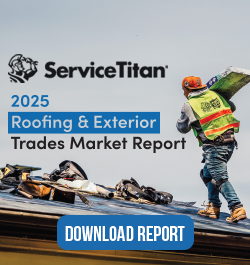
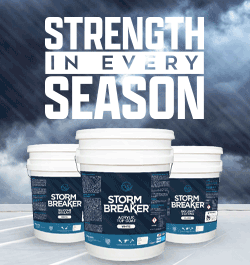




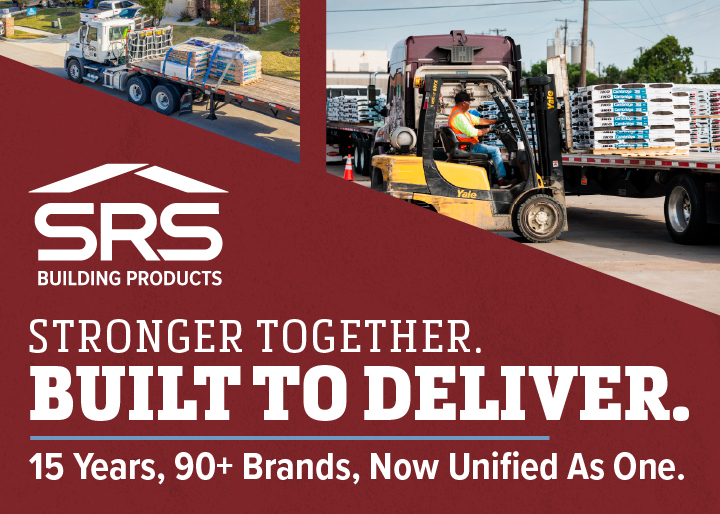
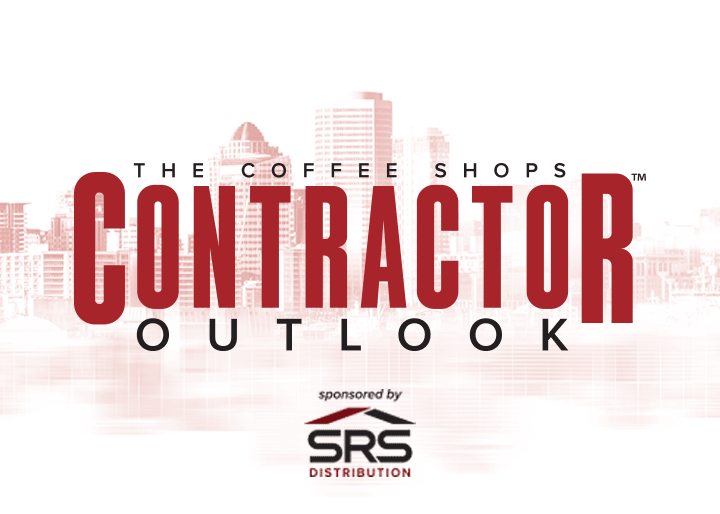

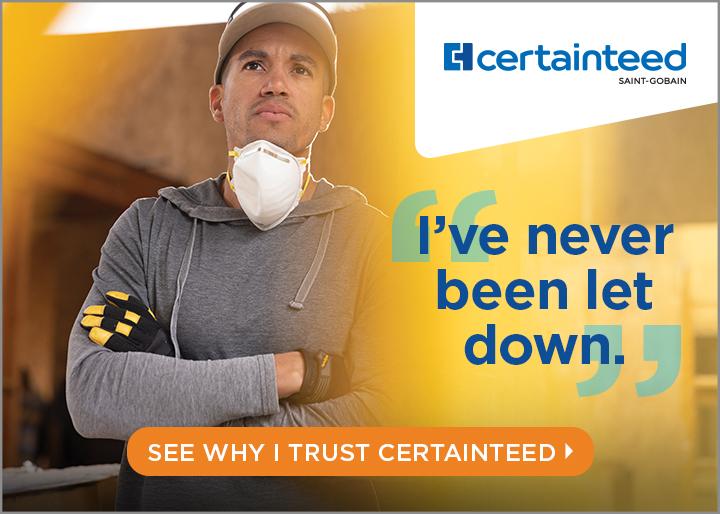
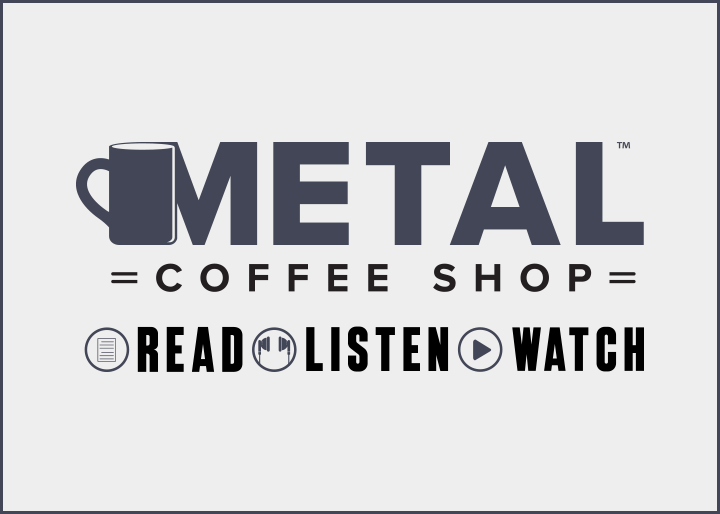
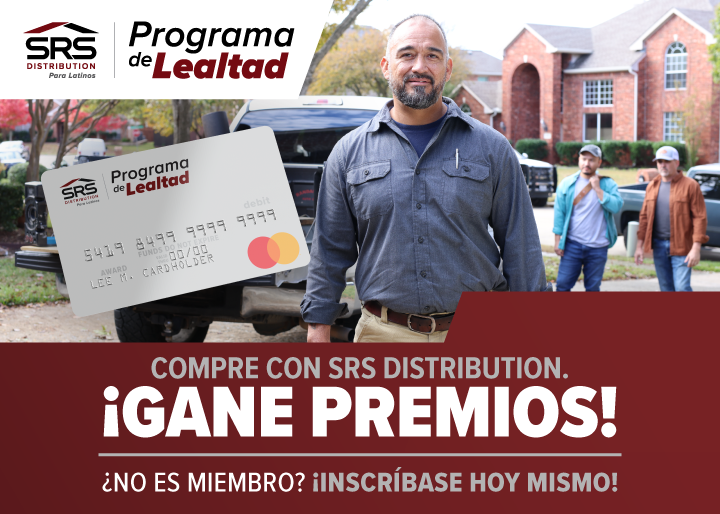
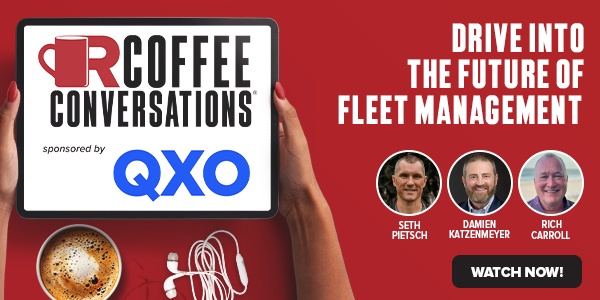
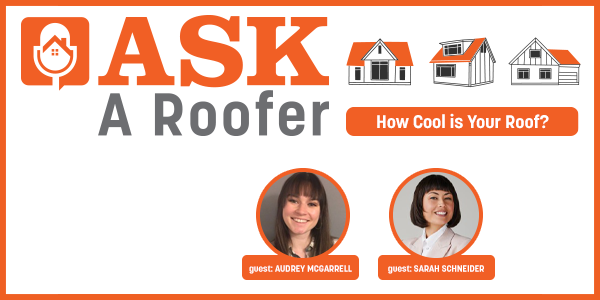
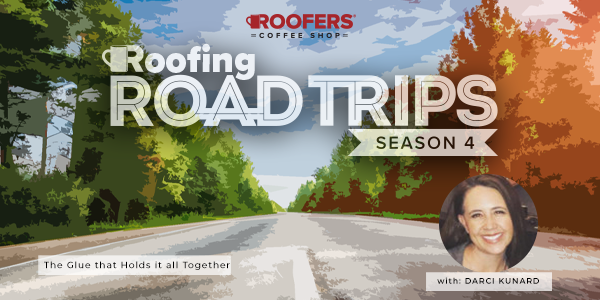
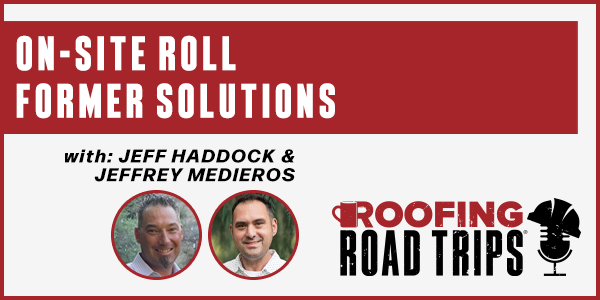






Comments
Leave a Reply
Have an account? Login to leave a comment!
Sign In